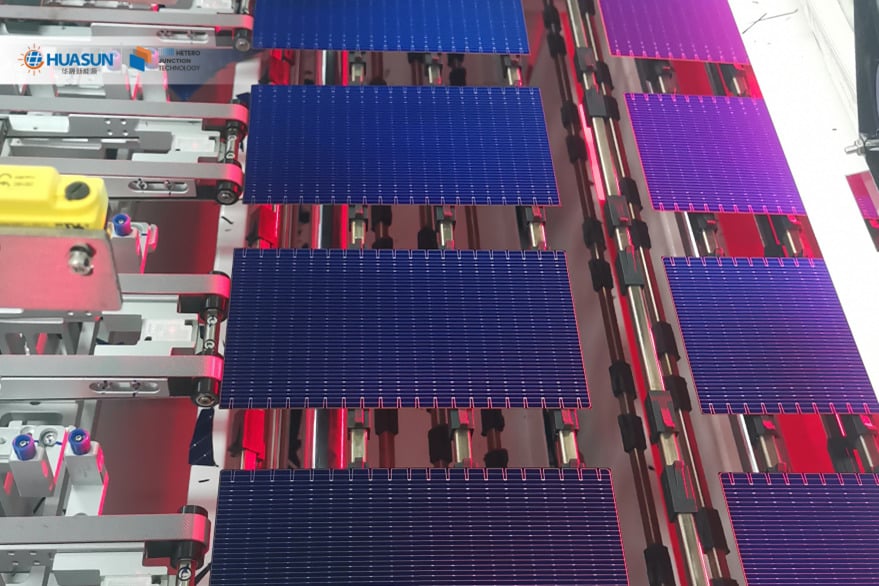
Chinese solar manufacturer Huasun has reported “record-breaking” efficiency figures for its mass-produced heterojunction technology (HJT) solar cells.
Huasun claimed that its G12R and G12 HJT cells achieved 26.01% and 26.15% average energy conversion efficiency, respectively, this week. Moreover, the cells’ peak efficiencies hit 26.41% and 26.5% in mass production, Huasun claimed.
Try Premium for just $1
- Full premium access for the first month at only $1
- Converts to an annual rate after 30 days unless cancelled
- Cancel anytime during the trial period
Premium Benefits
- Expert industry analysis and interviews
- Digital access to PV Tech Power journal
- Exclusive event discounts
Or get the full Premium subscription right away
Or continue reading this article for free
The company did not identify any third-party confirmation of this efficiency rating.
The cells were produced using “HJT 3.0 bifacial microcrystalline technology” and will be deployed in Huasun’s zero busbar (0BB) modules, which it unveiled earlier this year. The company said that 0BB technology allows for higher conversion efficiency, enhanced reliability and lower levelised cost of electricity (LCOE) for PV projects.
Huasun has a multi-GW production capacity for HJT cells, and it is one of two leading manufacturers for the technology alongside Risen Energy.
As the industry moves on from passivated emitter-rear contact (PERC) solar technology, the majority of manufacturers have opted for tunnel oxide passivated contact (TOPCon) production rather than HJT. This is partly because of the ease with which a PERC production line can be adapted for TOPCon.
Speaking at the Large Scale Solar Europe 2024 conference last month, technical director at solar manufacturer GCL system integration, Vitor Rodrigues, said that he expected HJT products to become more commonplace in 2025-26. Until then, he said that TOPCon’s market takeover was almost complete.





